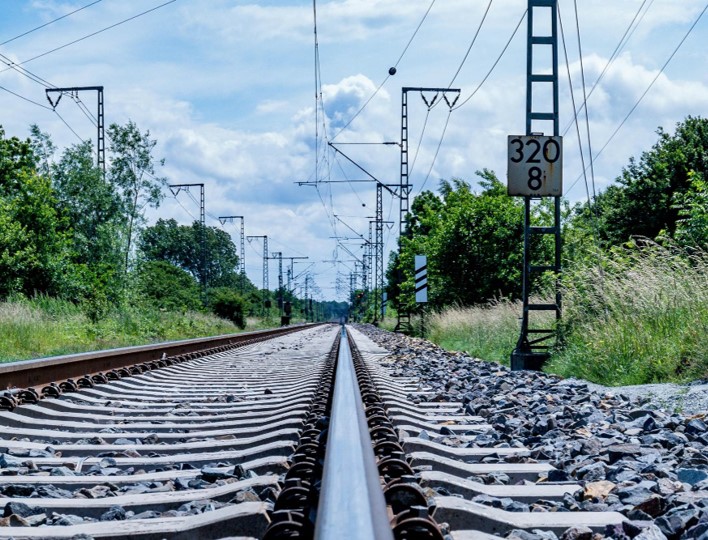Smart replacement transport for regional rail

Imagine your train journey is interrupted by an unforeseen closure. The uncertainty and frustration can be overwhelming. But what if a hidden command center could instantly spring into action, seamlessly arranging your onward travel? At Regionalverkehr Oberbayern (RVO), this capability is now a reality, all thanks to “SEM.” Explore the future of smart alternative mobility.
Getting there, even when the rails aren’t running
Imagine an unexpected, last-minute track closure. Your train stops, and suddenly, nothing moves. Passengers are left in limbo: how and when will they get to their destination? This scenario makes typical delays seem harmless, yet it unfortunately happens all too often.
To prevent escalating passenger frustration and ensure public transport remains a reliable alternative to private vehicles, a swift and professional solution to get passengers where they need to go is essential. Passengers must be able to trust that, despite unexpected interruptions, they will reliably reach their destination.
When a line is disrupted and trains can no longer operate, Bus Emergency Service (BNV) steps in. This is a rapidly organized replacement service using buses, enabling the timely continuation of planned and often already-started journeys. The deployment of a BNV is sudden for all affected transport companies, not just the passengers. At this critical moment, seamless collaboration between railway operators, bus companies, and their subcontractors is vital to ensure no one is “left stranded.”
The challenge: rapidly organizing enough replacement vehicles, informing passengers, and adjusting timetables – all in a very short timeframe.
Thanks to the SEM app, we can provide our subcontractors with information about needed trips much more easily, and we always have an overview of where each vehicle is located.
Our solution to this challenge: SEM (Smart Replacement Transport)
To tackle this challenge, Wavestone, in collaboration with Regionalverkehr Oberbayern (RVO, a subsidiary of DB Regio Bus), developed and implemented a solution for “Smart Replacement Transport” (SEM). SEM connects all parties involved, ensuring that replacement transport is quickly coordinated and provided as needed.
Let’s look at the process: When a disruption occurs, dispatchers at the railway operating company (EVU) input the affected line section and the estimated duration of the incident. The system then identifies affected trains based on the current timetable and automatically estimates the required passenger capacity, which can be adjusted if necessary. This order is then forwarded to RVO.
At the bus dispatch center, the goal is to organize the necessary vehicle capacities as quickly as possible. Thanks to pre-registered available capacities from their subcontractors, time-consuming communication is eliminated. The system automatically identifies available vehicles based on location and timeframe, including travel times to the pick-up point. Available and suitable vehicles from subcontractors can be ordered immediately. These subcontractors then confirm the received assignment.
Ordered trips are then reconciled with the demand from each train needing replacement. This gives bus dispatch a constant forecast of how well the required passenger capacities are covered and for which periods additional capacity is still needed.
Since there aren’t always enough pre-registered vehicles, new vehicles and taxis can also be flexibly booked as needed.
SEM-BNV: Smart Replacement Transport for Regional Rail in Oberbayern
Another crucial factor for smooth operations is communication. Bus drivers receive all information about their assigned trips via an app. This allows subcontractors to be integrated regardless of their specific hardware or software for vehicle coordination (e.g., RBL system). The app also handles navigation and tracks the vehicle’s current position, determining actual arrival and departure times. This real-time data is then used to provide live updates for passengers. Travelers receive information about alternative services through standard timetable information channels, such as the DB Navigator.
Finally, once the disruption is resolved, the trip data is made available for billing purposes.
Within just four months of development, the SEM platform for the Munich S-Bahn network entered pilot operation and has since been continuously enhanced. It can now be used for rail replacement services and for monitoring various special transports, in addition to emergency bus services. By 2024, the volume of transport managed through SEM has grown to 60,000 completed trips annually, and this number continues to rise.
Our conclusion on Smart Replacement Transport at Regionalverkehr Oberbayern
The success story of SEM at Regionalverkehr Oberbayern powerfully demonstrates how even complex challenges in public local transport can be overcome. This is achieved through innovative technologies and continuously adaptating to customer needs, in collaboration with experts like Wavestone. SEM is more than just a solution for disruptions; it’s an example of future-oriented mobility assurance that strengthens passenger trust in public transport and sustainably boosts its appeal.

The 4 phases: preparation, IT testing, RT testing, closing

